It’s important to consider variety of factors when using a temperature data logger to ensure your data is as accurate and reliable as possible. Read our top five considerations below:
1) Initial Configuration
On average, a 15–30-minute sampling interval is sufficient when recording data. However, you should choose a sample rate that reflects the fluctuation likelihood of the environment or appliance. Setting a higher frequency for your temperature data logger means it will record more data, although keep in mind this does not guarantee higher quality data. A slower sample rate is more accustomed to data being recorded across a wider range of safe storage temperatures.
2) Calibrating Your Temperature Data Logger
After purchasing a data logger for your temperature monitoring system, you may be required to calibrate it to test its accuracy. Depending on the industry you operate in, there will be best practices to measure and compare against. Doing so ensures your temperature sensor is working efficiently and gives you peace of mind knowing your products will be monitored accurately.
3) Positioning of Temperature Probe
Placement of the temperature probe is vital in recording the highest quality data. The temperature sensor in the probe will be static, thus only being able to record in a vicinity around the point. Try to avoid placing it in areas where temperature can be inadvertently fluctuated to ensure the data collection process is as accurate as possible.
4) Testing Temperature Sensor Alarm
Functionality of your alarms should be consistently tested to guarantee there are no flaws within your temperature monitoring system. Notifications should be set up to a primary method of contact where the user will be able to action a response and fix any issues immediately.
5) Regularly Reviewing your Temperature Monitoring System
After the calibration and installation of your system, it is important to schedule in regular checks. These include checking your temperature logger and sensor have no technical issues, as well as making sure the setup is correct, e.g. the sample rate.
For more information on how to use a temperature data logger, get in touch with our friendly team at Loggershop. Give us a call on 01929 459459 or email [email protected].





